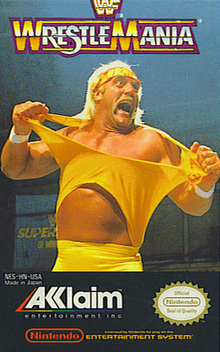
WrestleMania III was the third annual WrestleMania professional wrestling pay-per-view (PPV) event produced by the World Wrestling Federation. The event was held on March 29, 1987, at the Pontiac Silverdome in Pontiac, Michigan. There were 12 matches, with the main event featuring Hulk Hogan successfully defending the WWF World Heavyweight Championship against André the Giant.

WrestleMania X was the 10th annual WrestleMania professional wrestling pay-per-view (PPV) event produced by the World Wrestling Federation. It took place on March 20, 1994, at Madison Square Garden in New York, New York. The central focus of the pay-per-view was the WWF Championship, which was defended in two matches. Due to Lex Luger and Bret Hart being named the co-winners of the 1994 Royal Rumble match, both challenged champion Yokozuna. Luger was first but was disqualified for pushing the referee. Hart faced Yokozuna later in the evening and won the championship by pinning Yokozuna. This led to a lengthy worked feud between Bret and his brother Owen, who had defeated Bret in the opening match of the pay-per-view.

WrestleMania IV was the fourth annual WrestleMania professional wrestling pay-per-view (PPV) event produced by the World Wrestling Federation. The event took place on March 27, 1988, at Boardwalk Hall in Atlantic City, New Jersey. The announced attendance of the event was 19,199.
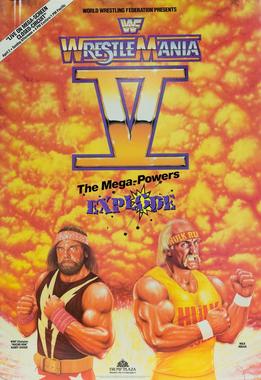
WrestleMania V was the fifth annual WrestleMania professional wrestling pay-per-view (PPV) event produced by the World Wrestling Federation. It took place on April 2, 1989, at the Boardwalk Hall in Atlantic City, New Jersey. A total of 14 matches were contested at the event.

WWF WrestleMania 2000 is a professional wrestling video game released in 1999 on the Nintendo 64 (N64) console. It was based on the World Wrestling Federation's annual pay-per-view, WrestleMania. Despite the fact that this game is based upon WrestleMania 2000, the game was released five months prior to the actual PPV itself, therefore resulting in the game using the stage design from the 1999 event, WrestleMania XV, instead. Released at the height of the WWF's Attitude Era, WrestleMania 2000 was the first WWF game released by THQ. The wrestling company ended its long relationship with Acclaim Entertainment after witnessing the video game success of its competitor, World Championship Wrestling (WCW), on behalf of THQ. WrestleMania 2000 shares its game engine with the Japan-only release Virtual Pro Wrestling 2: Ōdō Keishō.

WWF King of the Ring is a professional wrestling video game based on the World Wrestling Federation (WWF), released in 1993 for the Nintendo Entertainment System and Game Boy. It was the final WWF game released for the NES, and third WWF game released for the Game Boy. In this game, players can vie for the title of King of the Ring by competing in an eight-man single elimination tournament. Additionally, players can battle the entire roster through a string of singles matches to become WWF Champion. Also available are exhibition matches in singles and tag team modes for one or two players.

The Mega Bucks were a professional wrestling tag team that competed in the World Wrestling Federation (WWF) in 1988. The team, consisting of "The Million Dollar Man" Ted DiBiase and André the Giant, was formed in a storyline that saw DiBiase purchase André's contract from fellow manager Bobby Heenan. André was to win the WWF World Heavyweight Championship from Hulk Hogan, but then he attempted to sell the belt to DiBiase. The title was vacated, but DiBiase and André were then scheduled to face Hogan and Macho Man Randy Savage in a match at SummerSlam, which Hogan and Savage won. After the match, DiBiase and André went their separate ways and the team was dissolved.
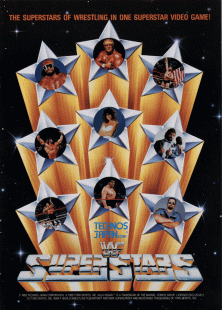
WWF Superstars is a wrestling video game manufactured by Technōs Japan and released for arcades in 1989. It is the first WWF arcade game to be released. A series of unrelated games with the same title were released by LJN for the original Game Boy. Technōs followed the game with the release of WWF WrestleFest in 1991.

WWF WrestleMania is a professional wrestling arcade game released by Midway Manufacturing Co. in 1995. It is based on the World Wrestling Federation (WWF) professional wrestling promotion.
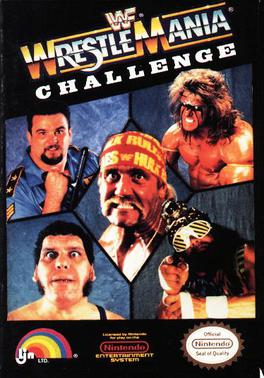
WWF WrestleMania Challenge is a professional wrestling video game based on the World Wrestling Federation (WWF), released in 1990 for the Nintendo Entertainment System by Acclaim Entertainment under the LJN label, and in 1992 for the Family Computer by Hot-B.

WWF Super WrestleMania is a multiplatform wrestling video game based on the World Wrestling Federation (WWF), released in 1992 for the Super Nintendo Entertainment System and the Sega Genesis.

WWF WrestleMania: Steel Cage Challenge is a professional wrestling video game based on the World Wrestling Federation (WWF), released in 1992 by Acclaim Entertainment for the Nintendo Entertainment System and in 1993 for the Master System and the Game Gear handheld console. The NES version was subsequently released as a handheld TV game in 2018 under the name WWE WrestleMania: Steel Cage Challenge, with all references to the "WWF" name and logo replaced by "WWE".
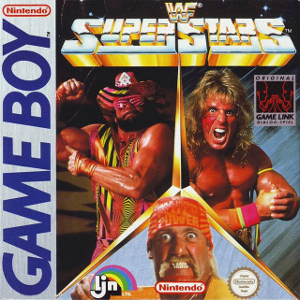
WWF Superstars is a video game released on the Game Boy handheld console by Acclaim Entertainment, based on the WWF's syndicated television show of the same name. This game was the first WWF/E game for the Game Boy system.

WWF Superstars 2 is a video game based on the World Wrestling Federation (WWF), released in 1992 for the Game Boy handheld console by Acclaim Entertainment. It is the sequel to WWF Superstars and the second WWF game for the Game Boy system. The game is similar to WWF WrestleMania: Steel Cage Challenge for the Nintendo Entertainment System, although it runs much faster.

Wrestling Superstars were the first action figures based on the wrestlers of the WWF. Wrestling action figures were the brainchild of Richard Derwald of Buffalo NY who sold the idea to LJN in the summer of 1984.. They were made by the toy and video game company LJN from 1984 to 1989. The figures were made of solid rubber and paint and were very accurate in appearance to their real life counterparts.

The 1988 SummerSlam was the inaugural SummerSlam professional wrestling pay-per-view (PPV) event produced by the World Wrestling Federation. It took place on August 29, 1988, at Madison Square Garden in New York City, New York. The pay-per-view was created to help the company compete against rival promotion Jim Crockett Promotions. It was one of the first four annual pay-per-view events produced by the WWF, along with WrestleMania, the Royal Rumble, and Survivor Series, which were eventually dubbed the "big four".
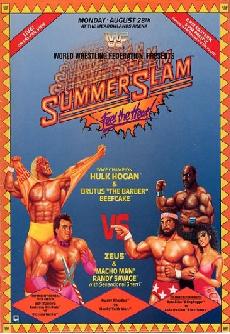
The 1989 SummerSlam was the second annual SummerSlam professional wrestling pay-per-view (PPV) event produced by the World Wrestling Federation. It took place on August 28, 1989, in the Meadowlands Arena in East Rutherford, New Jersey. Ten matches were contested at the event, including one dark match held before the live broadcast.

The 1987 Survivor Series was the inaugural Survivor Series professional wrestling pay-per-view (PPV) event produced by the World Wrestling Federation. It took place on Thanksgiving Night on November 26, 1987, and was held at the Richfield Coliseum in Richfield Township, Ohio. It was one of the first four annual pay-per-view events produced by the WWF, along with WrestleMania introduced in 1985 and Royal Rumble and SummerSlam introduced in 1988, referred to as the "Big Four".

WWF Rage in the Cage is a professional wrestling video game released by Acclaim Entertainment on December 21, 1993 for the Sega CD gaming system. It is a spin-off of sorts of LJN's 16-bit WWF games, as the gameplay engine and graphical style are the same as in WWF Royal Rumble for the Super NES and Sega Genesis, also developed by Sculptured Software.

The André the Giant–Hulk Hogan rivalry was a professional wrestling rivalry between wrestlers André the Giant and Hulk Hogan that took place in the World Wrestling Federation.
